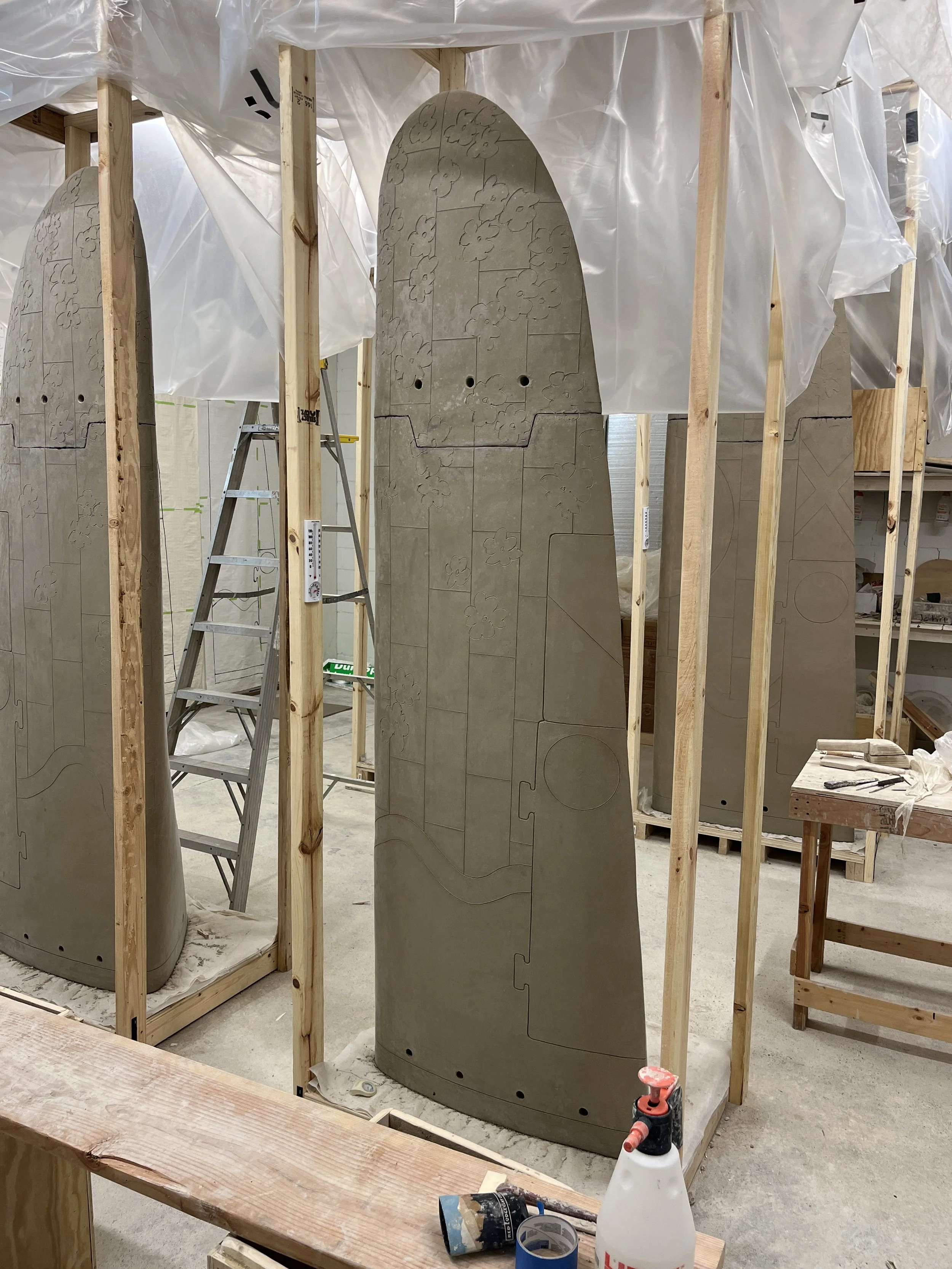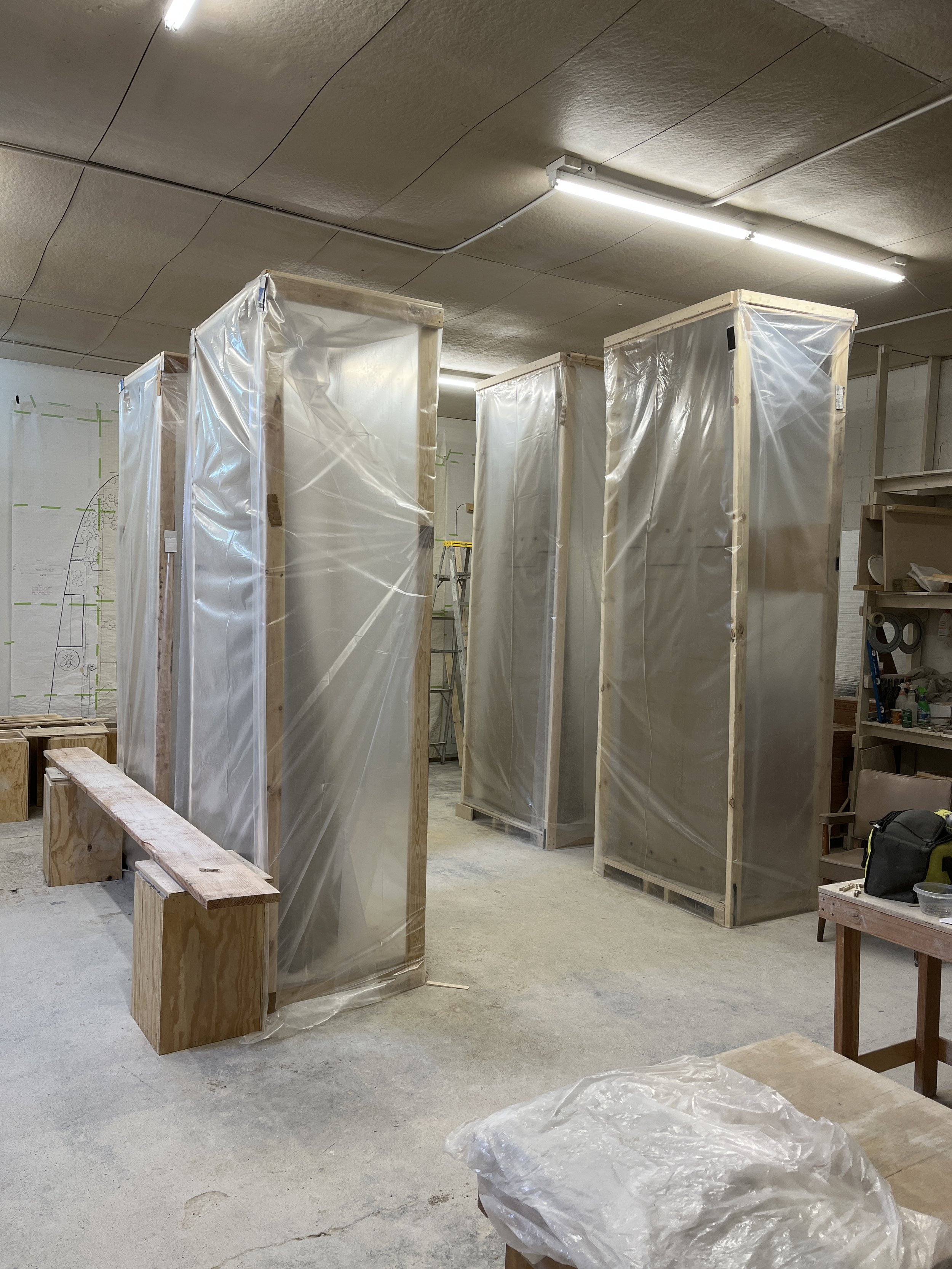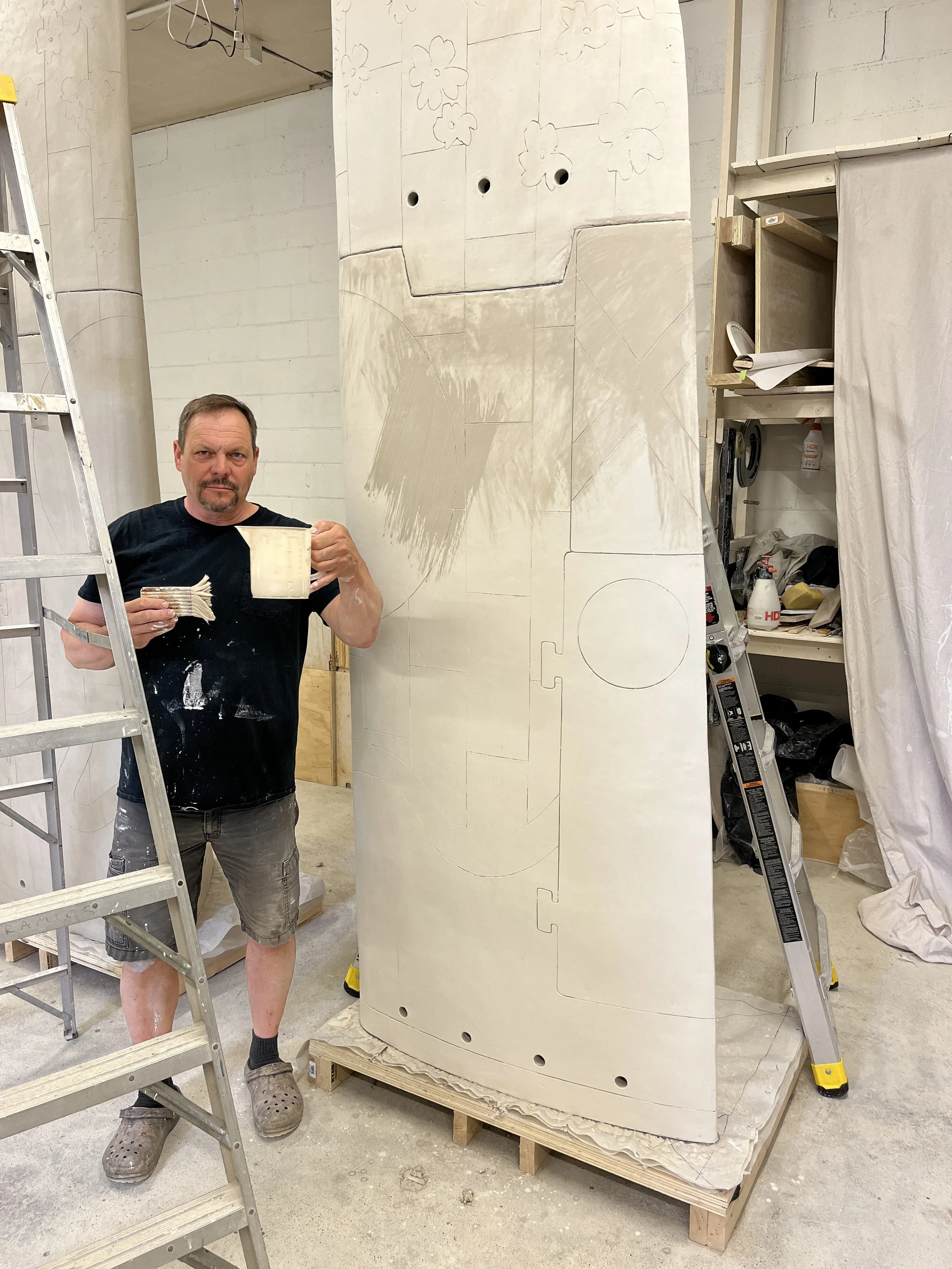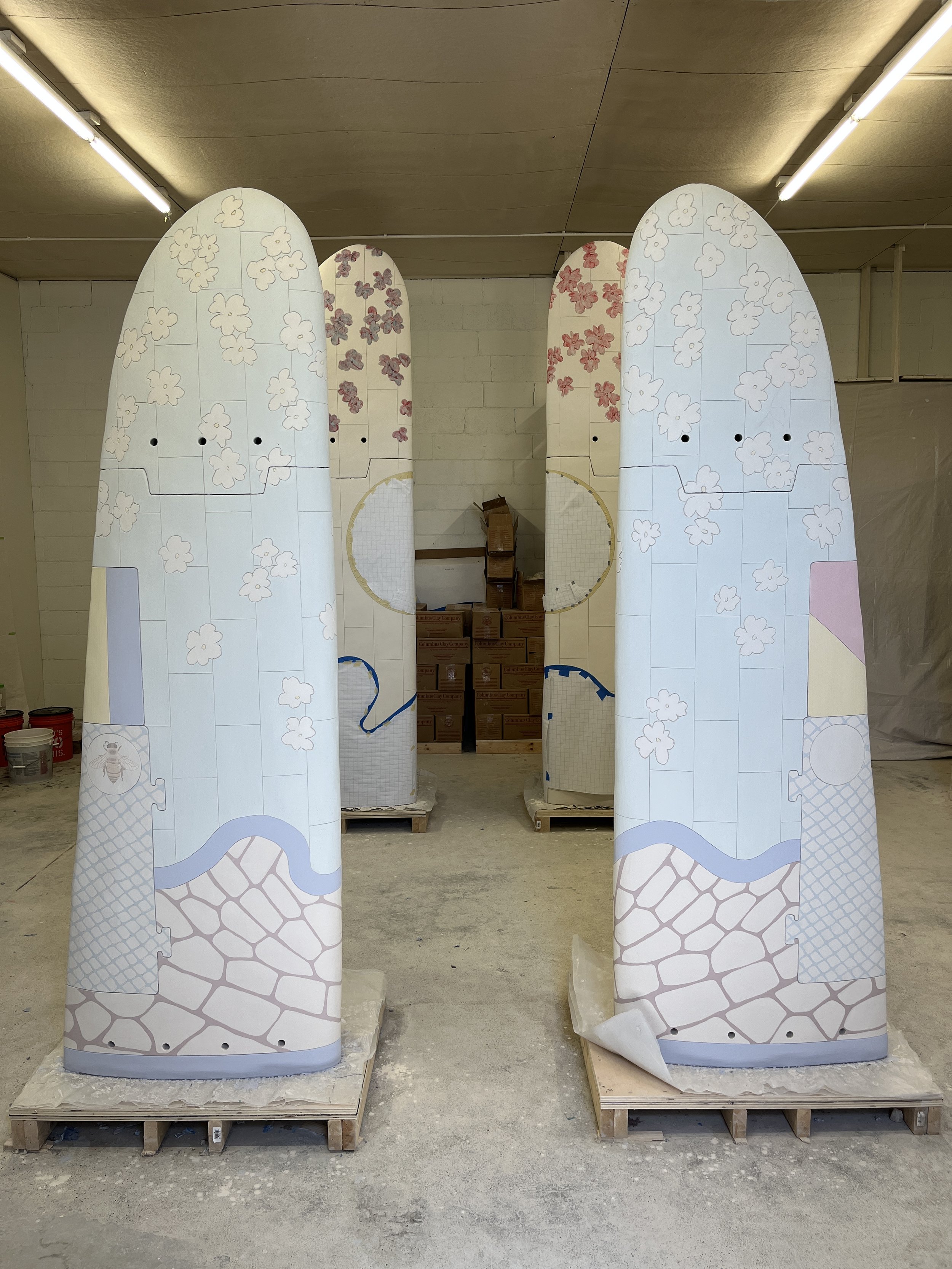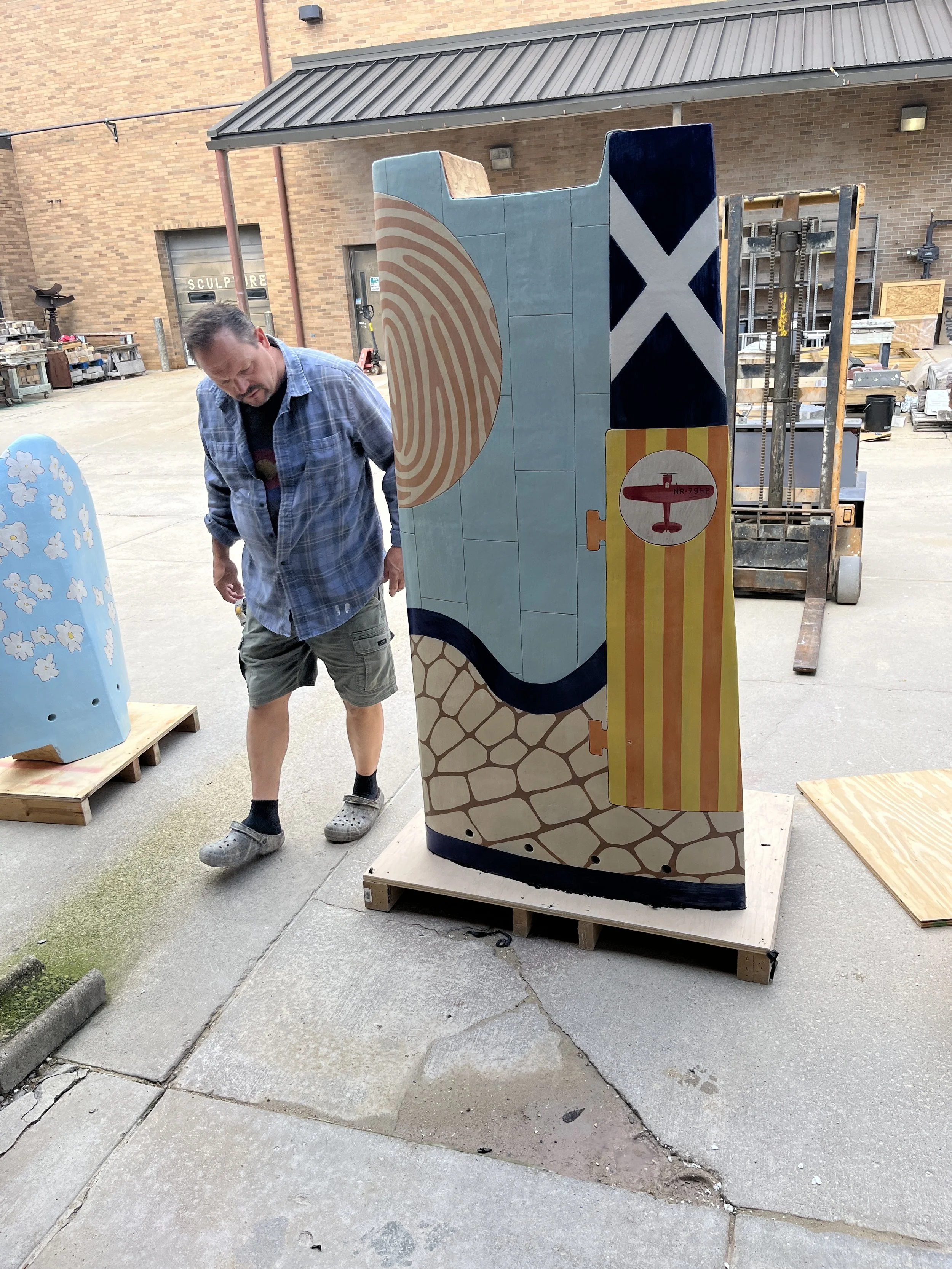Wings
Permanently installed at Kansas City International Airport, Kansas City, Missouri as a part of the “One Percent for Art” program

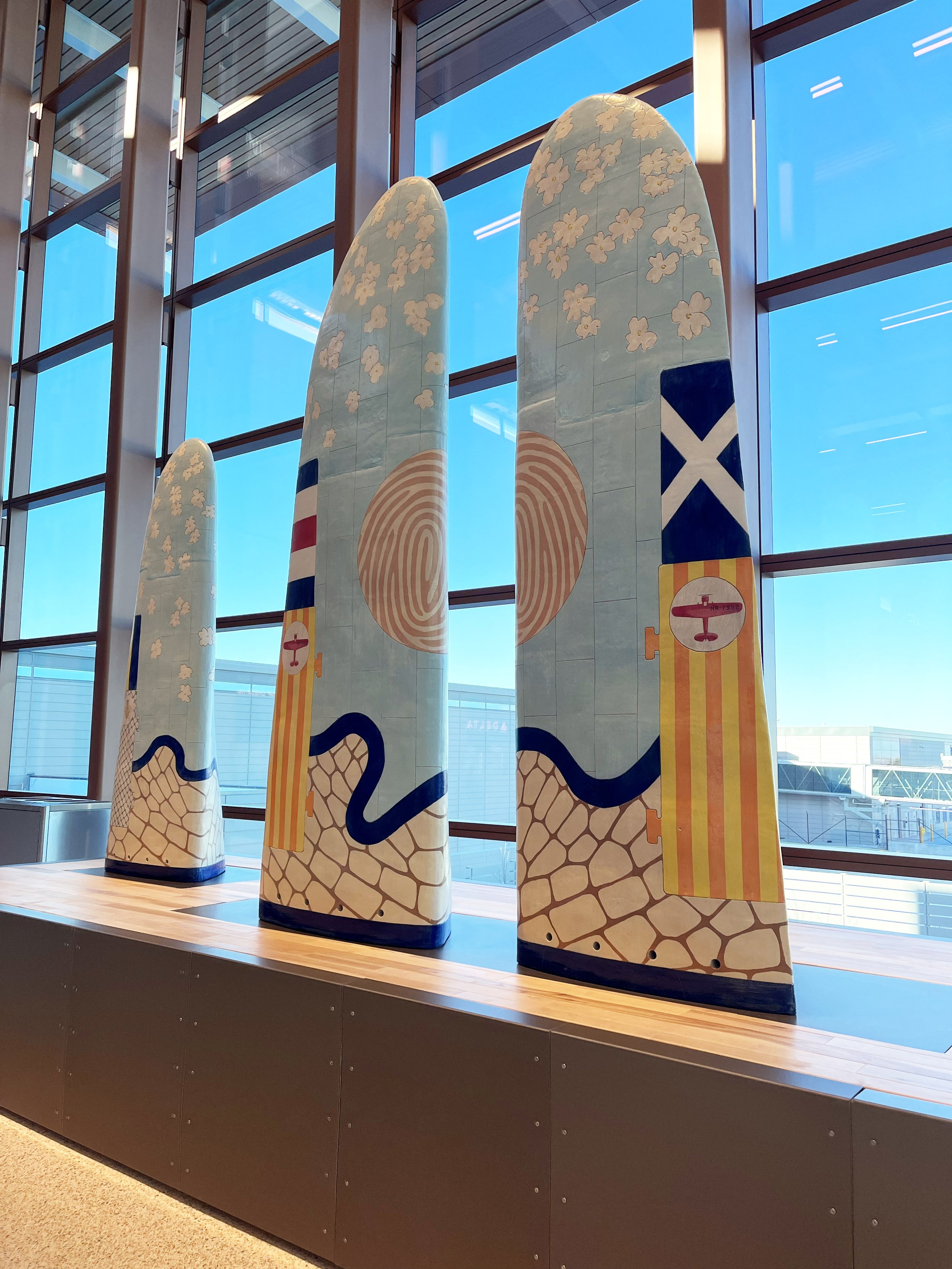




Wings consists of four large-scale ceramic sculptures which were built by hand by the artist using slab and coil techniques. They were dried for ten months, then painted with slips and glazes formulated by the artist. Each wing was fired separately in a large kiln which was fired for two hundred hours for each wing.
The two largest central wings, which are nearly ten feet tall, operate as a diptych which mirror each other and are connected by a patterned sphere that represents the human fingerprint. The smaller, eight-foot wings which flank the central wings on both sides have supportive imagery which connects all four elements visually.
The totemic orientation of the wing forms relates to totems that have been made by humans for thousands of years, except in this case they are clearly representations of modern airplane wings. The imagery is a codex of human and natural flight as well as iconography of the region.
The wavy blue line at the lower part of each wing represents how the Missouri river winds through Kansas City. The pattern below the river is that of a dragonfly, one of the earliest life forms to master flight. The light blue background color represents the sky of Kansas in the summer. The flowers floating on the light blue are from the Flowering Dogwood, the state tree of Missouri. The Honeybee on the left wing is the state insect of Kansas, the Eastern Bluebird on the far right wing is the state bird of Missouri. The airplane on the center wings is a Lockheed Vega, which is the plane that Amelia Earhart flew solo from the west coast to Hawaii. She was from the Kansas City area. The ailerons of the wings are painted in signal flag colors, spelling KCMO when read left to right. My hope is that over time travelers will unravel the meaning of the imagery and that all travelers who walk by the sculptures will have a positive experience enjoying the large wing forms and their colorful surfaces. The profile of the wings can be seen from a distance and are identifiable as wing forms as vehicles approach the terminal, especially at night.
Additional credits: A. Zahner Company for design and construction of the plinth, Belger Cartage Services for transport and installation of artwork, Shackbuilt for wood decking on the plinth.
Process
